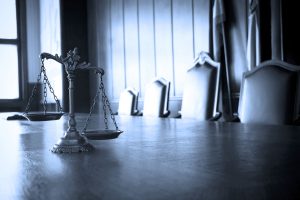Eyewitness Identifications

The first element of a criminal offense that a prosecuting attorney must prove, is the identification of the defendant. This identification can come about in a plethora of different ways. Physical evidence such as bodily fluids are generally preferred in the identification of a defendant. However, physical evidence may not always be available. In such cases, prosecuting attorneys resort to another form of identification: eyewitness. Eyewitness identifications can be done by either the witness(es) or the victim(s), either in-, or out-of-court. In-court procedures will be discussed later, procedures that occur out-of-court are discussed next.
Lineups
Commonly referred to as live lineups, occur when police officers present the witness(es) or the victim(s) with a group of people, to determine if he or she can identify the alleged suspect. During a live lineup, those called to appear for the most part share similar physical characteristics. To be clear, everyone called to participate in a live lineup may or may not be suspected of the alleged crime in question; those unsuspected, are called fillers. The number of required fillers vary from state to state, Georgia, however, requires a minimum of four.[1]
Showups
Similar in procedure to live lineups without the fillers. This situation typically occurs when an alleged suspect is apprehended shortly after an alleged crime and presented to the witness(es) or victim(s) for verification. As an example, after an alleged crime, police officers are notified of a description of an alleged suspect. Assuming a person matching the description is located and depending upon the circumstances, they might present that person to the witness(es) or the victim(s) to determine if they have apprehended the correct person.
Photospreads
Sometimes referred to as photo lineups, contain the same procedure as live lineups—except with pictures. During a photospread, a victim is given a set of photographs, either individually or in a mugshot book, and asked whether he or she can identify the alleged suspect. Similar to live lineups, the number of required fillers vary from state to state, Georgia, however, requires a minimum of five.[2]
Eyewitness procedures, like most aspects of our criminal justice system, are no exception to constitutional rights. For instance, defendants appearing before a live lineup are entitled to the assistance of counsel. However, defendants are not entitled to the assistance of counsel during photo lineups or showups. In addition to the constitutional right to counsel, due process issues can also arise.
Due process violations occur when under the circumstances, the out-of-court identification procedure was unnecessarily suggestive, potentially creating a very substantial likelihood of misidentification. To illustrate, picture a victim on his death bed. Bringing an African American defendant, handcuffed to five Caucasian officers, might be suggestive, but is likely not unnecessary. While the line between what is or is not unnecessarily suggestive is unclear, eyewitness procedures are also no exception to human error. It is possible for police officers to unintentionally say or do something in a suggestive manner, with the potential to be unnecessary. These potential errors suggest, utilizing one’s right to counsel may be the best course of action.
An in-court identification is when the witness(es) or the victim(s) identifies the defendant as the alleged suspect during trial. In-court identifications are generally admissible, so long as it comports with due process. Moreover, the suppression of an out-of-court identification under due process, could also result in the suppression of an in-court identification. In this instance, the prosecuting attorney would have to show that the in-court identification came from a source, independent of the out-of-court identification.
In recent years, studies have suggested that eyewitness testimony is highly unreliable. In fact, about 75% of those convicted largely on eyewitness identification, have been exonerated by physical evidence, resulting in millions of dollars paid out in compensation. Legislative policies and procedures have been enacted in response to these exonerations.
Having an attorney during a live lineup is the equivalent to having a second pair of eyes, one particularly verse in the relevant law, empirical data, and cases surrounding eyewitness identification procedures. As stated above, studies are beginning to classify eyewitness identifications as unreliable, however, its use is still widely accepted. Allow Bixon Law to not only assist you in this procedure, but also to protect your constitutional righ
[1]O.C.G.A. § 17-20-2(a)(5)
[2]Id.









